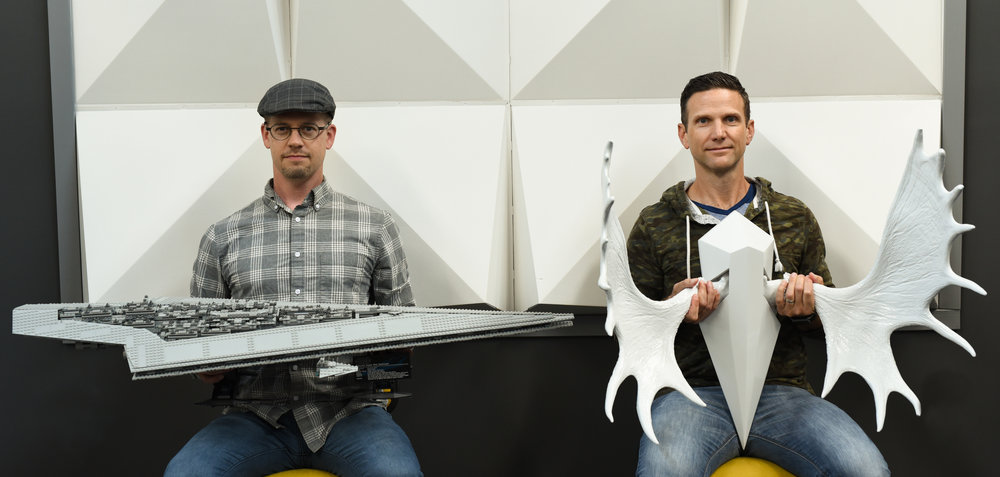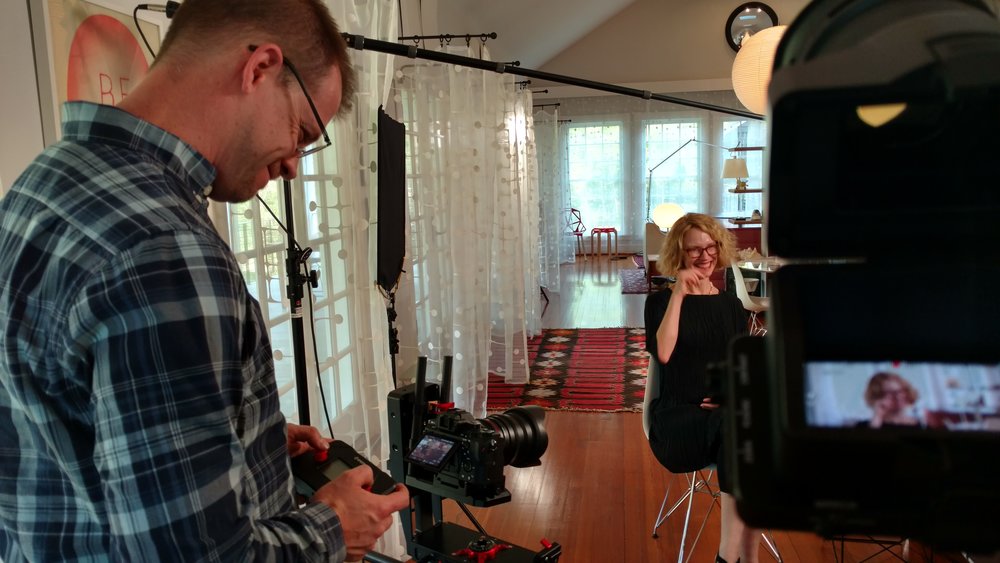

“Finding the right things and the right approach to telling the stories to grab people — it really does affect everything.” – John Pottenger
Co-founders of Match Frame Creative, Jay Irwin and John Pottenger, have spent the last four years as the yin to each other’s yang, working with clients to craft unique and genuine messages to their corporate videos.
But when the chance to work on the new documentary series, The Kindergarten came along, the two took the chance to step away from their norm to try something different, and despite their hesitation to jump into such a challenging undertaking — tackling a large subject that has landed them with more than 70 hours of footage to sift through — they found a new passion project. The Kindergarten, sees the two working to tell a story about the origin of Kindergarten as invented by Friedrich Froebel, and where the education system is at now.
Intrigued by the trailer to their new series — set to an driving, imaginative soundtrack by Marmoset artist, Keen Collective — we chatted with Jay and John about what they look for when putting music to picture, how to hone in on one message when storytelling, and their best piece of advice to their younger selves.
Can you tell me a little bit about the upcoming documentary, The Kindergarten?
Jay: We primarily focus on corporate work here at Match Frame, but one day a friend of ours came in the door and he did this pitch for us. He wanted to make a Kickstarter video to make a pitch video to raise more money to do a film, which would hopefully raise more money to do a series.
It’s been two and a half years now since that encounter and it hasn’t ever ceased to blow our minds about how far-reaching it is, how impactful it is and how deep it goes — the story just keeps getting bigger. We just keep uncovering more and more. We’ve become addicted and in love with the topic. What started off being like, “Well, this guy might be crazy, but we’ll give it a shot.”
That’s awesome. It sounds like there’s a lot there, and that’s really cool to find a story that unfurls in front of you as you dig deeper. What was the biggest challenge in filming a film like this?
John: The biggest challenge for us is figuring out how to tell the story, because it really goes in so many directions. It touches the women’s movement, it touches modern art, it touches, of course, every aspect of education, today’s problems with education, from assessment to management to funding, teaching training — all kinds of things that are happening today that are not good. Politics, it just scatters everywhere. It’s just like, “Where do you start? How do you do this story justice?” It’s been extremely challenging. Some people know who Frank Lloyd Wright is, famous American architect.
Some people don’t know who that is, but they’re passionate about mathematics or crystallography or they’re passionate about the women’s movement. Pick one of those angles; you maybe isolate just one specific audience. Finding the right things and the right approach to telling the stories to grab as many people, it really does affect everything.
On the reverse side, what would you say is the most valuable thing that you’ve learned so far?
Jay: John and I both have kids, so obviously this became something deeply personal to us, not to mention our own schooling experience and all of that. It’s just having the blinders taken off and understanding why education is what it is today and also giving a glimpse into what education could easily offer that it’s not offering. Thinking about how that would make a difference in my life and knowing how it could make a difference in my daughters’ lives. It’s just a powerful thing.
Do you, after all of this research and filming and everything you’ve done, see a solution to the system?
John: There’s just so many factors, but if you can understand where we came from and how we got to where we are today, then I think that informs your specific circumstances and you can guide things in your circumstance, if that makes sense.
Yeah, there’s not one system or one option or one field that we could tap that would fix everything, but I think if people can embrace the greater topic and have the conversation around it all, then I think we’ll be able to come up with solutions for a kid.
Awesome. Shifting gears, you mentioned that you make a lot of more corporate videos with Match Frame Creative and you help communicate and shape messages. What are some important things that people should know when approaching making corporate videos for a business?
John: I think it’s so easy, especially in corporate work, to lose that core message and get lost in trying to manage the project or just getting it done or making it look a certain way or things like that, that you forget what that source message is.
That would be the key thing that I would say, is always go back to that source. Another way of recapping that: we say often, “What is the one-sentence takeaway that we want people to have when they watch this video?”

What do you usually look for when picking the music to go along with one of your projects? How do you know when the song is the right fit?
John: For me, it’s the emotional appropriateness of the piece.
Jay: Yeah. Music is usually one of the big characters of the entire piece, so it’s like casting. What are the major characters to your entire story?
John: It’s the emotional parallel that you need to move the content forward. You can put a lot of stuff out there, but sometimes it drives the creativity. If we have a real creative idea, we need to now find music to match that, and sometimes it’s the other way: sometimes we’ll stumble across a song that inspires an idea that shapes our creative. Sometimes it’s fun to approach it with our expectations and sometimes we come to it with an open mind and see if something can surprise us.
What makes a film or a commercial or a short great for you? Are there certain qualities that make it better in your eyes?
Jay: I’d say for me, personally, there’s a whole bunch of factors. The experience, going through the entire experience with the client — was it a great experience? Were we able to really help them out in a significant way through the experience?
John: For me, what makes a good video is one that you can tell the person thought about the story and then successfully executed that. You can tell when the story is not there. It falls down, sometimes several times throughout the process.
If you were to meet your younger self, what advice would you give to yourself, maybe when you were just starting off filmmaking?
Jay: Oh man, I would definitely tell myself not to worry so much. If I would’ve had any idea that I would get paid to have as much fun as we get to have, I think life would’ve been a lot less stressful.
John: For me, it would be try and not do everything, but try to find fewer things and do them well instead of doing a lot of things sort of okay. Just pick one thing that you’re really good at, focus in on that. If you know your focus and you know your goal, then stay with that. That’s what I’ve taught myself.

